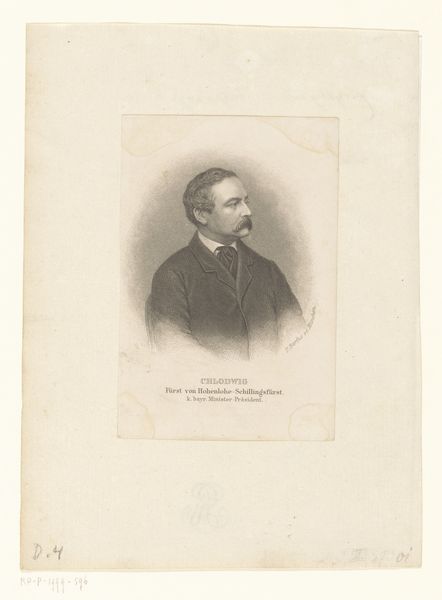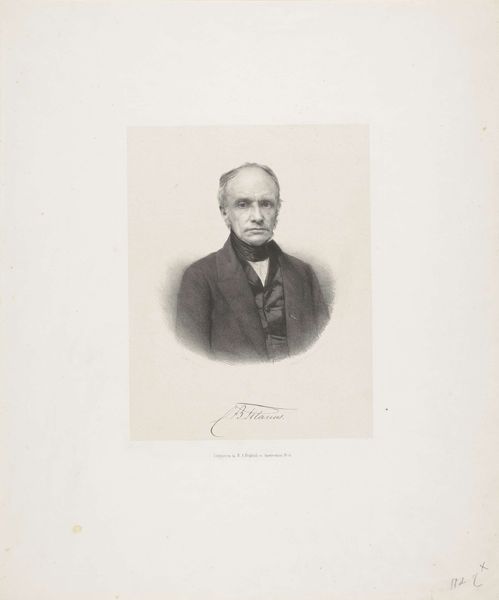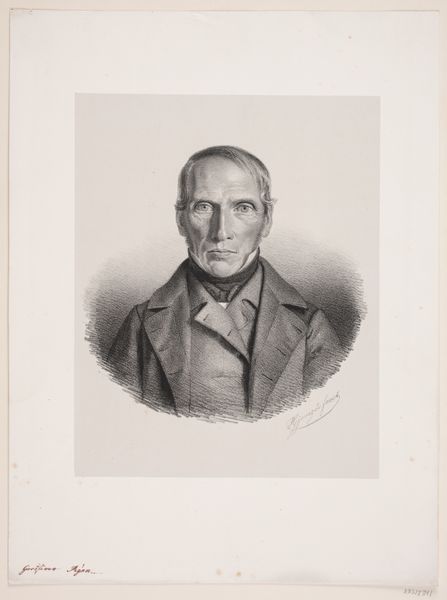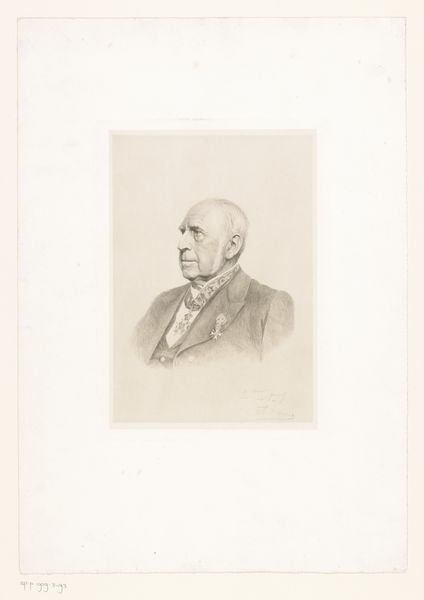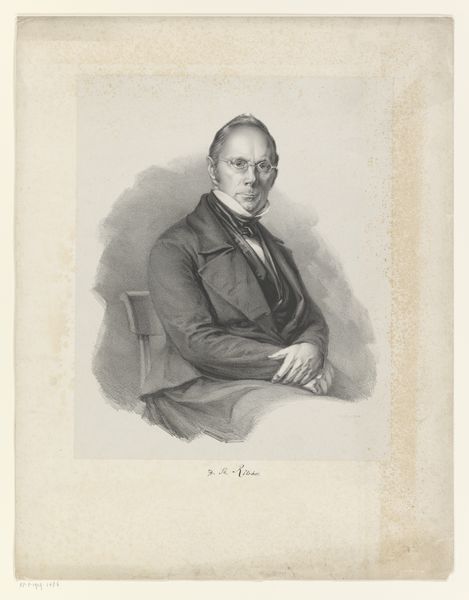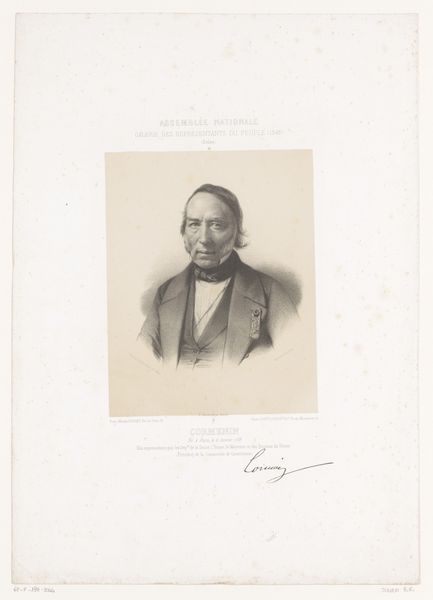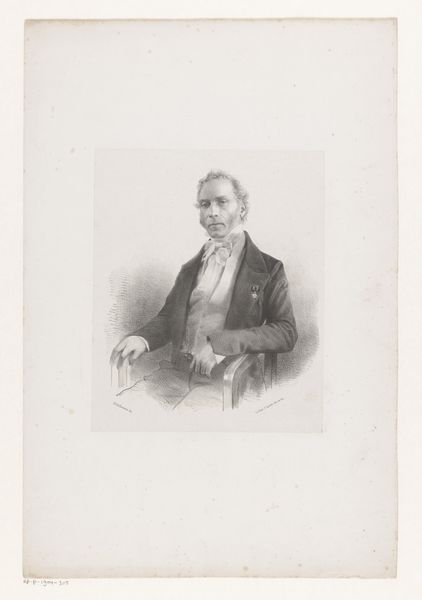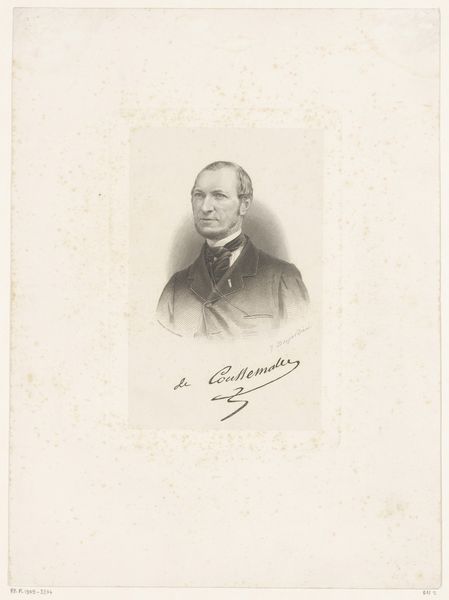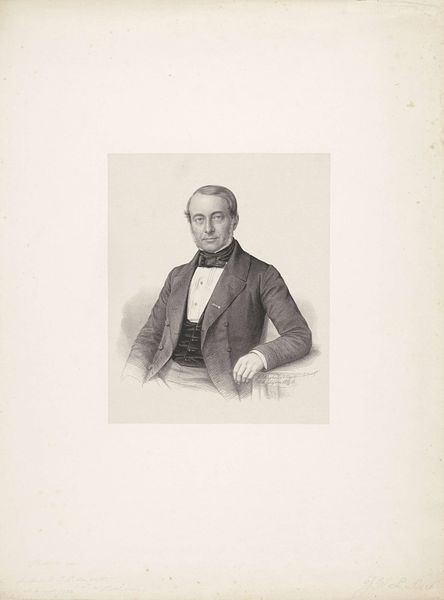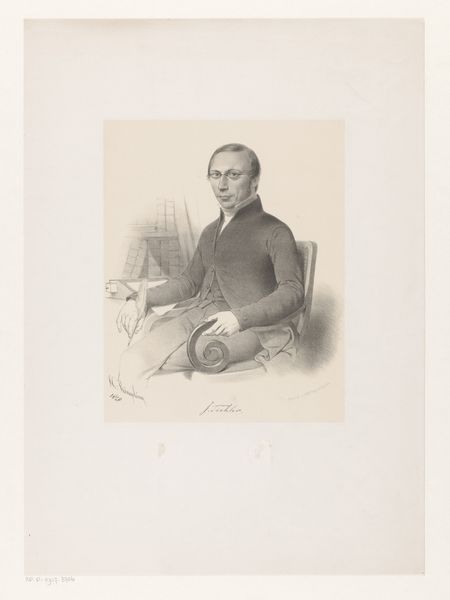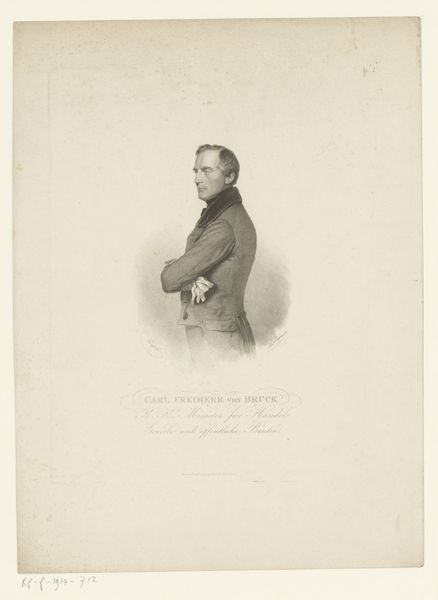
lithograph, print
#
lithograph
# print
#
history-painting
#
academic-art
#
realism
Dimensions: 180 mm (height) x 145 mm (width) (billedmaal), 365 None (height) x 260 None (width) (bladmaal)
Curator: Sober. Dignified. And something in the tight, controlled linework makes me think of a pressed flower. Editor: Indeed. We are looking at a lithograph from 1839, created by Johan Christian Emil Hassel. It's titled "C. A. H. Kalkar" and currently resides at the SMK, Statens Museum for Kunst. A powerful example of academic realism. Curator: Academic is right. I mean, look at that jacket! It's all discipline and proper tailoring. Yet, the eyes... they hint at something simmering beneath the surface, don’t you think? Editor: The contrasting textures, smooth skin against the coarser fabric, contribute to a visual tension. Hassel masterfully uses light and shadow to sculpt Kalkar's face, almost to emphasize the rigor, shall we say, beneath the academic style? Curator: Precisely. It makes me wonder, what was Kalkar's story? What were his passions, his demons? The piece demands to look beneath the carefully constructed surface. Like a stage play—everything looks to be set. I am just unsure for what. Editor: Historical context provides a clue. 1839 was a period of intense national and political development. A portrait like this wasn't merely representational; it served to construct and project an image of authority. You feel that formality right down to the little inscription at the bottom, an affirmation of Kalkar's personal significance. Curator: I find myself imagining Kalkar's studio sitting. A single moment captured in a room that contains lifetimes. Each stroke has intention that has transformed time in to something solid. He may not have realized that at the moment. Editor: Well, in this print, we are confronted not just with an individual but with the very idea of representation. A moment is made enduring; an ideal, manifest. A powerful, if somewhat constrained, piece. Curator: I am more inclined to suggest a simple honesty. I do take some issue with the sense that artists were "only" portraying what they thought a person "should" look like, I find a deeper intimacy in what is captured. Editor: An optimism on your part I admire. Thank you for sharing your insights!
Comments
No comments
Be the first to comment and join the conversation on the ultimate creative platform.

